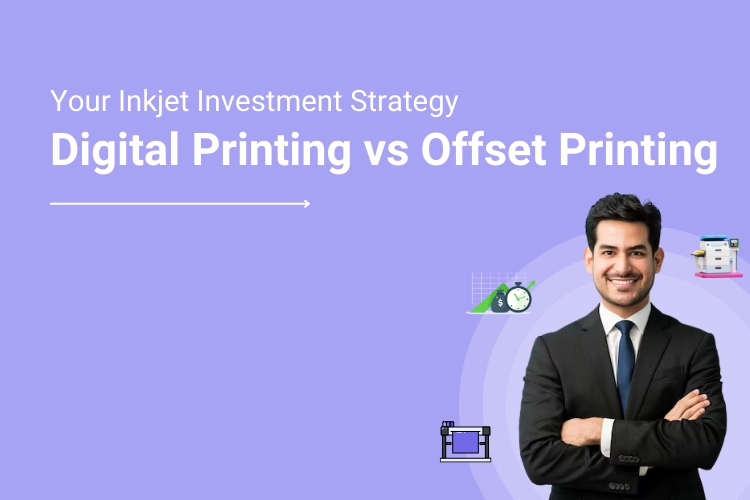Suppose you are in the business of selling custom business cards, brochures, leaflets, and other marketing materials to your customers. In that case, you already know you will need a web-to-print solution to ensure they can easily order a suitable print-ready design, color scheme, copy, layout, and more on your site. However, that is not it.
You also need to make an important decision regarding the type of printing technique you want to select for your online printing business. This article aims to shine a light on the two most popular methods — digital and offset printing.
Let us begin:
What is digital printing?
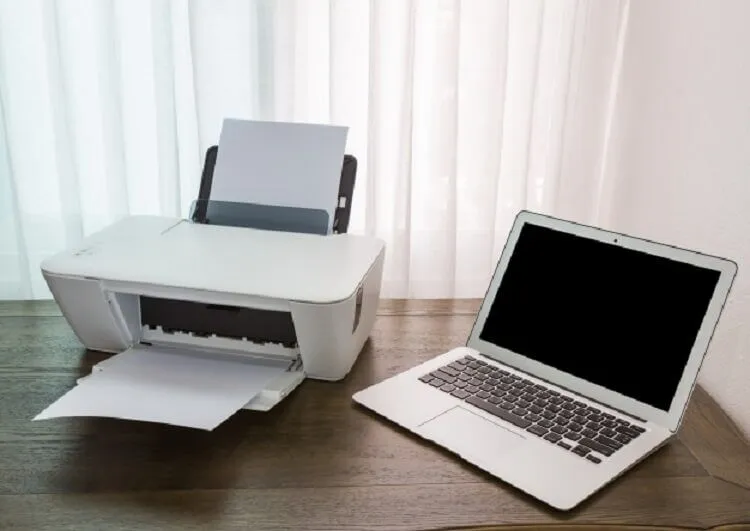
This type of printing involves an image being digitally transferred from the computer to a digital printing machine. Electrostatic rollers, also known as drums, are used to apply toners to sheets of paper — a process similar to that used by most inkjet printers. Plus, for each color applied, a different drum is required.
What is offset printing?
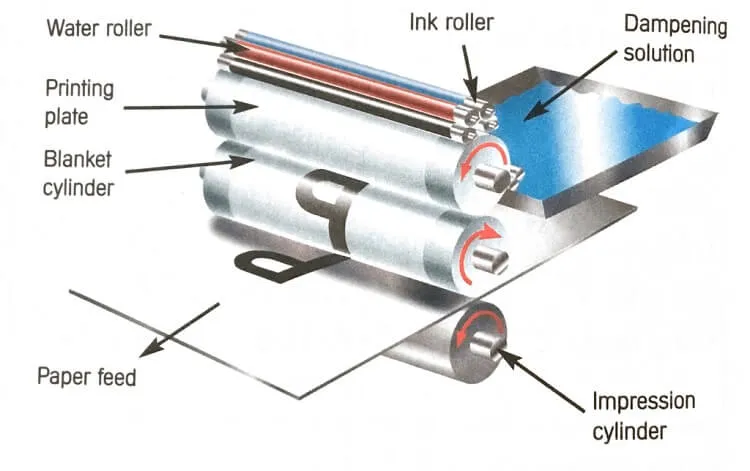
There is a reason why offset printing is called what it is. It is because the ink for the image is transferred to a cylinder before being applied to the print surface, rather than directly. The process calls for plates made of aluminum or some similar material.
Each plate is laser-etched with information from a digital file of the image. The plate is affixed to a roller called the plate cylinder, which then transfers the ink to another cylinder with a rubber sheet called a blanket.
This, in turn, rolls the ink — in the shape of the image — onto the paper, vinyl, or other final print surfaces. Before the actual printing, it is advisable to do a trial run on scrap paper to check that the metal plates are suitably inked.
Factors to consider when choosing a printing process
Both digital printing and offset printing are popular choices for any printing project of your customers. However, the two will yield vastly different results at different price points. Here are some pointers to keep in mind when deciding which one is right for you:
1. Shorter runs
Offset printing requires more materials and more machinery setup than digital printing. When your customers need only a few copies of your print product, digital printing is the best option. Simultaneously, given that the paper and ink for offset printing costs less when in bulk, this is a good option if you sell large volumes of copies.
2. Sheet size
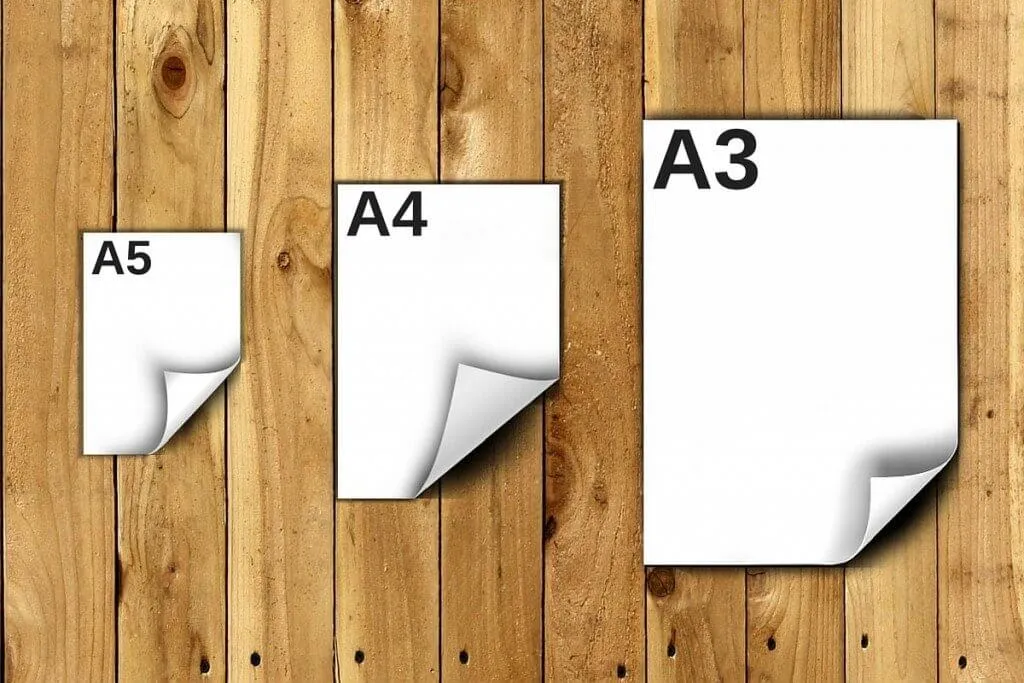
While digital printing usually produces sheets between 19 inches and 29 inches, offset printing allows for sheets between 29 inches and 40 inches. If you sell custom banners and posters that are enormous in size, offset printing makes more sense.
3. Turnaround time
Offset printing requires much more setup time than digital printing. For on-demand print orders, therefore, digital printing is the better option. If your entire printing business model is based on delivering fast, your printing method needs to be able to support that.
4. Materials used
Digital printing works with only a limited number of paper and ink types and surface finishes. If you need more tailored finishes or ink types, therefore, you might have to go for offset printing. Therefore, choose wisely.
5. Personalization

If your customers need each copy to be different, such as invites with other names and addresses on each, digital is the way to go. Since the image information comes from a digital file, they can always make tweaks by changing the file’s information as required.
Read Later: Sublimation vs. Heat Transfer: Which Printing Method is Right for You?
Why inkjet print is growing
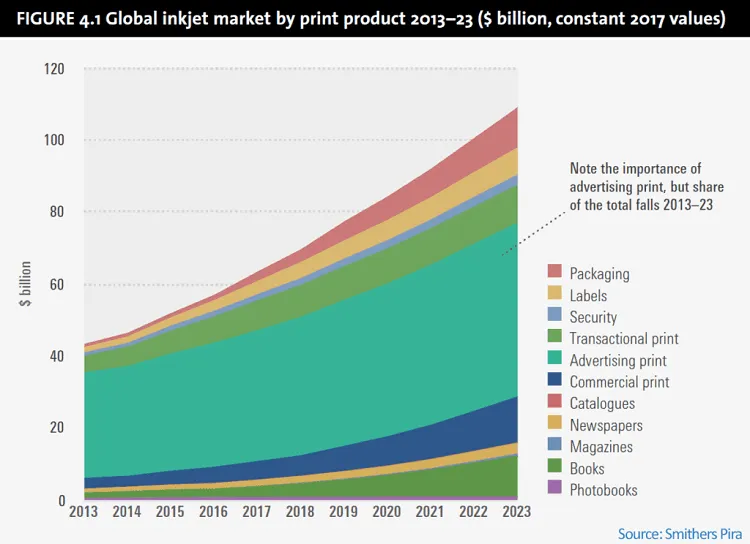
According to the Smithers report ‘The Future of Inkjet Printing to 2025’, the inkjet printing market was worth $80.4 billion in 2020 and is set to go up to $118.2 billion by 2025.
Inkjet is ideal for catering to customers’ changing demands across all print sectors better than analog alternatives. Printers and converters recognize this and have spent about $3.9 billion on new inkjet technology in 2020.
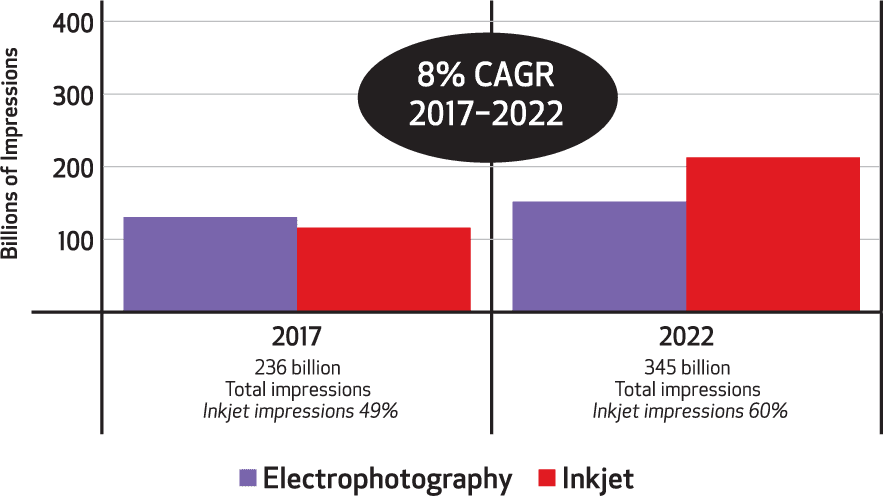
The report identifies the following six trends as significant growth drivers for inkjet over the next five years:
1. Flexibility
Inkjet allows printing companies to respond more agilely to customer demands and accommodate their individual requests. One way of being more productive is by deploying a web-to-print solution that enables customers to personalize their products and order them.
2. Digital capability
With inkjet, your customers need only print what they need, which reduces waste and keeps the supply chain more efficient. It also produces higher volumes than toner and can close the gap between standard offset and electrophotographic run lengths.
3. Non-impact printing
Inkjet printing can be used on delicate surface materials that will not support other methods like offset printing. If you are selling the option to print on different materials, inkjet is the way to go. It can also print on coated and uncoated stocks.
Have a Look: 7 Hacks for Canada Printers to Bubble their Sales up
4. New technology
Higher-performance technology to support inkjet printing is rapidly becoming a favorite for printing companies. With integrated manufacturing methods, linking pre-press with printing and one-pass operation completions, print product manufacturing is set to be more efficient than ever before.
5. Changes in retail supply chain
With eCommerce now the norm, businesses in the retail sector can look at transit packaging as a new way of connecting with the customer and improving the overall buying experience relatively quickly. With a web-to-print solution, you can offer such businesses the platform to order suitable printed items.
6. Sustainability
Inkjet printing uses less material and fewer chemicals than traditional printing techniques, thus making it a more sustainable option.
Reasons to invest in an inkjet printer
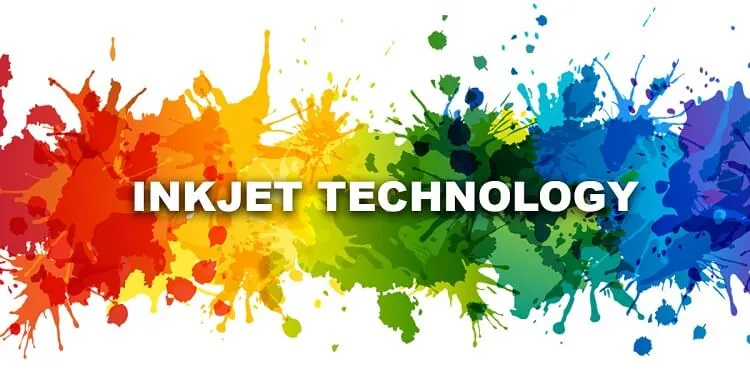
1. Personalization
The level of personalization when it comes to high image quality is perhaps the biggest reason to buy an inkjet printer. Inkjet technology enables the precise positioning of ink dots, as many as 1440×1440 per inch, making for extremely accurate image replication.
Inkjet technology also allows for creating extremely bright, vivid, and lifelike images with excellent shading and tone.
2. Speed
Inkjet printing allows customers to place an order on a smaller batch of items without hampering the quality or overall costs. While an inkjet printer may take a little longer to print than a laser printer, the warm-up time is very low (nil in some cases), which means that the process of receiving documents and commencing the printing happens very quickly.
3. Size
Inkjet printers, even the most advanced ones, are always more compact than a laser printer with similar print quality.
4. Price
While investing in a top-notch printer will require a sizable investment, inkjet models are almost always cheaper than similar laser models. Plus, many inkjet printers are multifunctional, making them excellent value for money.
Final words
In the print business, multiple factors such as image quality, image size, volumes required, individual needs, surface material, and time-to-delivery determine what kind of printer a business goes for.
Inkjet printers are perhaps the fastest and most reliable option out there, which is why print businesses are rapidly moving in favor of inkjet technology.
Whether you fulfill large orders for corporations or help create custom albums for families, therefore, an inkjet printer will undoubtedly take your print business to the next level.
If you have decided your printing technique but want to level up your online printing business, deploy a web-to-print solution today! Call us on +1-347-647-9799 or visit our website for more info.

